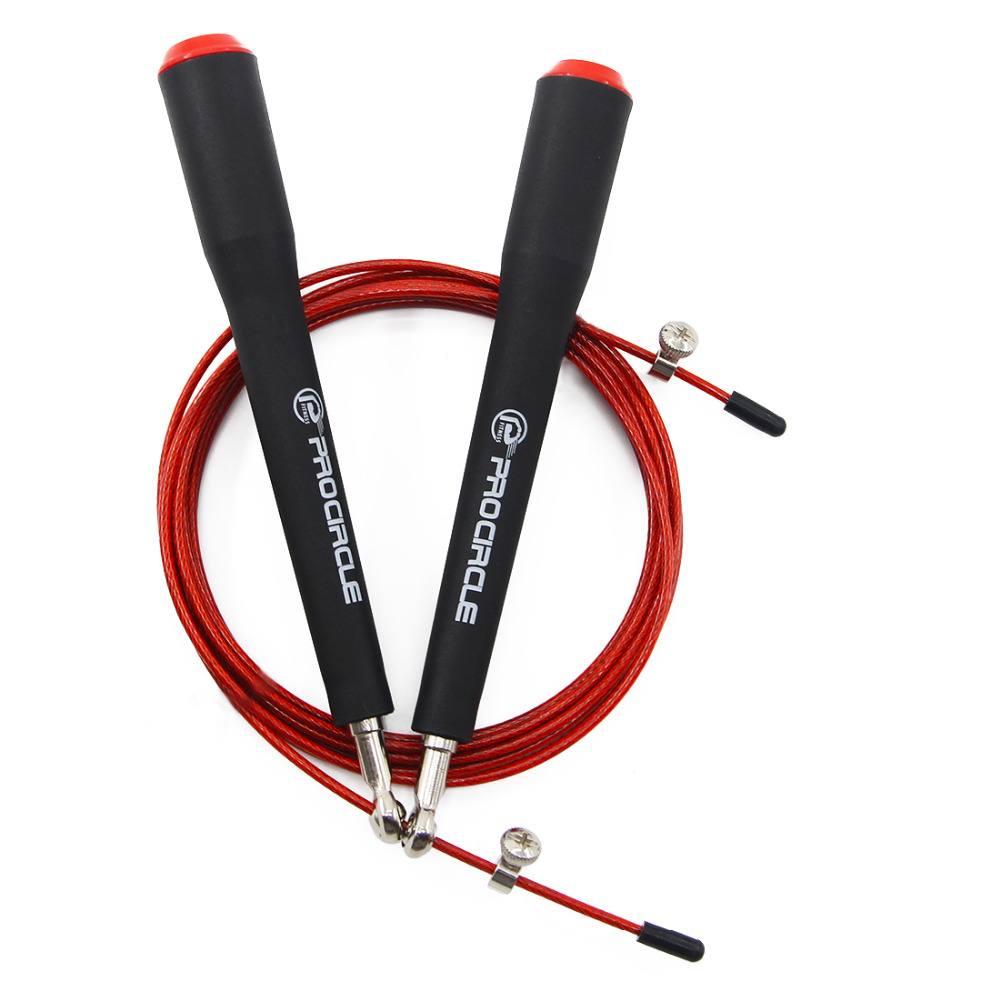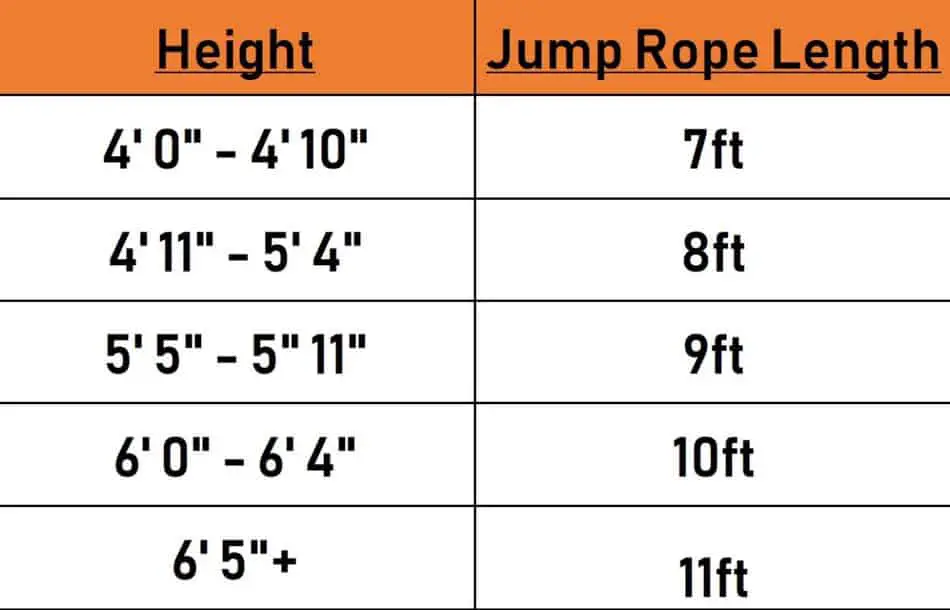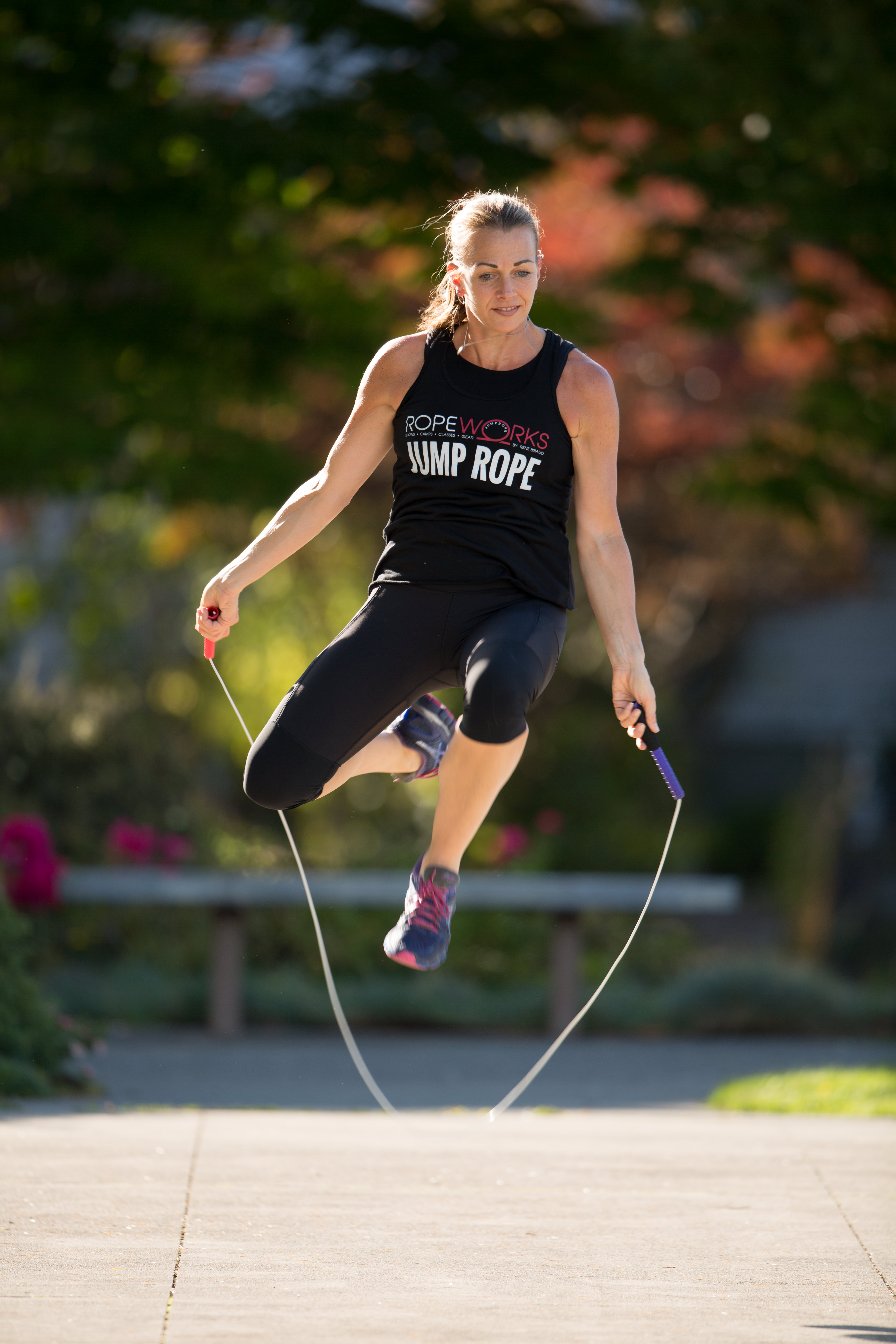Understanding the Basics: What is a Jump Rope?
A jump rope, also known as a skipping rope, is a simple fitness tool consisting of a flexible rope with handles on either end. Jump ropes come in various lengths, weights, and materials, each designed for specific purposes and skill levels. The primary use of a jump rope is to perform a jumping exercise, where the user jumps over the rope as it passes under their feet. This exercise is an effective form of cardiovascular training, often used in high-intensity interval training (HIIT) workouts and boxing routines.
The Art of Jump Rope: How it Works
Jumping rope is a dynamic exercise that involves a rhythmic pattern of jumping over the rope as it passes under the feet. To perform this exercise correctly, users must maintain proper form and posture. Start by holding the handles with a loose grip, keeping the elbows close to the body, and rotating the wrists to swing the rope. As the rope approaches the feet, jump slightly off the ground, ensuring the feet do not touch the rope. Aim to land softly on the balls of the feet, absorbing the impact through the ankles, knees, and hips. Maintain a smooth and consistent jumping motion, keeping the upper body still and the core engaged.
Proper technique and posture are crucial for maximizing the benefits of jumping rope and minimizing the risk of injury. When executed correctly, jumping rope can improve cardiovascular health, burn calories, and enhance coordination and agility. Moreover, mastering the art of jumping rope can be a rewarding experience, providing a sense of accomplishment and motivation to continue pursuing fitness goals.
Measuring Jump Rope Speed: The One-Minute Test
Measuring jump rope speed involves counting the number of successful jumps completed in a minute. This metric, often referred to as “jumps per minute” (JPM), is a valuable tool for tracking progress and setting fitness goals. By regularly measuring JPM, individuals can monitor their improvement, identify areas for improvement, and adjust their training regimen accordingly.
To perform the one-minute jump rope test, follow these steps: 1. Warm-up: Begin with a five-minute warm-up, including light cardio and dynamic stretches. 2. Set up: Secure a jump rope with the appropriate length and handle design for your skill level. 3. Start jumping: Start the timer and begin jumping rope at a comfortable pace, focusing on maintaining proper form and posture. 4. Record your score: After one minute, stop jumping and record the number of successful jumps. 5. Analyze the results: Compare your score to the typical jump rope speeds range to determine your current skill level and identify areas for improvement.
Regularly performing the one-minute jump rope test can help individuals monitor their progress and stay motivated in their fitness journey. By setting achievable goals and consistently working to improve their JPM, individuals can enhance their overall fitness, burn calories, and increase agility.
Factors Affecting Jump Rope Speed
Various factors can influence an individual’s jump rope speed, including rope length, handle design, and skill level. By understanding these factors, individuals can optimize their training and achieve maximum efficiency. Here are some tips for addressing each factor:
Rope Length
Using a rope that is too long or too short can negatively impact jump rope speed and technique. To determine the appropriate rope length, stand on the middle of the rope and pull the handles up to your armpits. If the handles reach your armpits, the rope is the correct length. Adjust the length as needed for optimal speed and efficiency.
Handle Design
Handles come in various shapes, sizes, and materials, each designed for specific purposes. Some handles are lightweight and aerodynamic, while others are heavier and provide additional resistance. Experiment with different handle designs to find the one that best suits your needs and enhances your jump rope speed.
Individual Skill Level
An individual’s skill level plays a significant role in their jump rope speed. Beginners may struggle with proper form and technique, while advanced jumpers may have refined their skills over time. To improve jump rope speed, focus on mastering the fundamentals, such as proper jumping technique, hand-eye coordination, and rhythm. As skills improve, gradually increase speed and intensity.
Additional Tips
In addition to addressing the factors above, consider incorporating these tips to optimize jump rope speed:
- Warm-up: Begin each training session with a dynamic warm-up, including light cardio and mobility exercises.
- Practice: Regularly practice jumping rope to improve technique, endurance, and speed.
- Cross-train: Incorporate other forms of cardiovascular exercise, such as running or cycling, to improve overall fitness and endurance.
- Rest: Allow adequate rest and recovery time between training sessions to prevent injury and promote muscle growth and repair.
- Patience: Improving jump rope speed takes time and dedication. Stay patient, consistent, and persistent in your training efforts.
Typical Jump Rope Speeds: A Range to Consider
Jump rope speed can vary significantly depending on an individual’s skill level, experience, and training. Here is a range of typical jump rope speeds to consider:
- Beginner: A beginner may struggle with proper form and technique, resulting in a slower jump rope speed. Typically, beginners can perform between 50 to 70 jumps per minute (JPM). At this stage, focus on mastering the fundamentals, such as proper jumping technique, hand-eye coordination, and rhythm.
- Intermediate: As skills improve, jump rope speed will naturally increase. Intermediate jumpers can typically perform between 80 to 100 JPM. At this level, consider incorporating jump rope speed training into your workout routine to further improve technique and efficiency.
- Advanced: Advanced jumpers have refined their skills and can perform at a high level of efficiency. Typically, advanced jumpers can perform between 120 to 140 JPM or higher. At this stage, focus on maintaining proper form and posture while increasing speed and intensity.
Remember that jump rope speed is not the only metric for measuring fitness or skill level. Instead, focus on mastering the fundamentals, improving overall fitness, and enjoying the process of jumping rope. By consistently training and refining your skills, you can improve your jump rope speed and achieve your fitness goals.
Improving Jump Rope Speed: Techniques and Tips
Improving jump rope speed requires consistent practice, patience, and dedication. Here are some techniques and tips to help you increase your speed:
Practice with a Weighted Rope
Using a weighted jump rope can help build strength and endurance in the forearms and shoulders, which can improve jump rope speed. Start with a lighter weighted rope and gradually increase the weight as your strength and endurance improve.
Increase Endurance
Building endurance is crucial for improving jump rope speed. Incorporate high-intensity interval training (HIIT) workouts into your routine, alternating between high-speed jumping and active recovery periods. This type of training can help improve cardiovascular health, burn calories, and increase overall endurance.
Improve Form and Technique
Proper form and technique are essential for maximizing efficiency and improving jump rope speed. Focus on maintaining proper posture, keeping the elbows close to the body, and using the wrists to rotate the rope. Additionally, practice jumping on the balls of the feet, which can help improve agility and speed.
Use a Metronome
Using a metronome can help improve jump rope speed and rhythm. Set the metronome to a desired beats per minute (BPM) and practice jumping rope in sync with the beat. Gradually increase the BPM as your speed and endurance improve.
Consistency and Patience
Improving jump rope speed takes time and dedication. Consistently practicing and refining your skills can help you achieve your fitness goals and improve your overall fitness level. Stay patient, persistent, and enjoy the process of jumping rope.
Jump Rope Speed and Fitness Goals
Jump rope speed can be a valuable metric for tracking progress and achieving fitness goals. By incorporating jump rope speed training into your workout routine, you can improve cardiovascular health, burn calories, and increase agility. Here are some examples of workout routines that incorporate jump rope speed training:
High-Intensity Interval Training (HIIT)
HIIT workouts involve alternating between high-intensity exercises and active recovery periods. For example, try jumping rope as fast as possible for 30 seconds, followed by 30 seconds of active recovery, such as jogging in place or jumping jacks. Repeat this pattern for several rounds to create a challenging and effective workout.
Tabata Training
Tabata training is a form of HIIT that involves 20 seconds of high-intensity exercise followed by 10 seconds of rest. For example, try jumping rope as fast as possible for 20 seconds, followed by 10 seconds of rest. Repeat this pattern for several rounds to create a challenging and efficient workout.
Endurance Training
Endurance training involves sustained periods of exercise at a moderate intensity. For example, try jumping rope at a consistent speed for several minutes, focusing on maintaining proper form and technique. Gradually increase the duration of your endurance training sessions to improve overall fitness and endurance.
Agility Training
Agility training involves quick movements and changes in direction. For example, try incorporating jump rope speed training into a dynamic warm-up or cool-down routine, alternating between high-speed jumping and lateral movements, such as side shuffles or lunges. This type of training can help improve overall agility, coordination, and balance.
Remember to track your progress and set achievable fitness goals when incorporating jump rope speed training into your workout routine. By consistently challenging yourself and refining your skills, you can improve your jump rope speed and achieve your fitness goals.
Jump Rope Speed Competitions: A Fun Way to Challenge Yourself
Jump rope speed competitions can be a fun and engaging way to challenge yourself and improve your skills. These competitions typically involve measuring the number of jumps you can perform in a minute and comparing your score to others. Here are some resources for finding or organizing jump rope speed competitions:
Local Fitness Centers and Gyms
Many local fitness centers and gyms offer jump rope classes or workshops that include speed competitions. Check with local gyms and fitness centers to see if they offer any jump rope-related events or competitions.
Online Communities and Forums
Online communities and forums, such as Reddit or Facebook groups, can be a great resource for finding jump rope enthusiasts and organizing competitions. Join online communities dedicated to jump rope or fitness and connect with others who share your interests.
Local Parks and Recreation Centers
Local parks and recreation centers may offer jump rope programs or events that include speed competitions. Check with your local parks and recreation department to see if they offer any jump rope-related activities.
Organizing Your Own Competition
If you can’t find a jump rope speed competition in your area, consider organizing your own. You can invite friends, family, or members of local fitness communities to participate. Set clear rules and guidelines, such as using the same type of jump rope and measuring jump count accurately, to ensure a fair and enjoyable competition.
Remember to focus on having fun and improving your skills, rather than just winning the competition. Jump rope speed competitions can be a great way to challenge yourself, connect with others, and enhance your overall fitness level.








